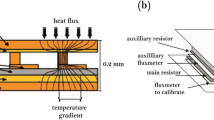Abstract
This paper attempts to quantify the strain response over time of samples of unloaded concrete block masonry observed in the laboratory with respect to the environmental variables of temperature and relative humidity. The notion of a thermo-hygral inertia is introduced, as deviations from the expected pattern of strain are considered over the experimental time scale in whole and in part. A method is elucidated which allows correction of the observed strain for non-constant ambient conditions, and the implications of the findings are considered in terms of likely effects on the use of laboratory test data on the monitoring of real structures.
Résumé
Cet article décrit une méthode pour la mesure en laboratoire de la déformation d'échantillons de bloc en béton non-chargé, en fonction du temps et de deux variables d'environment: la temperature et l'humidité relative. La notion d'une inertie hygro-thermique est introduite, tandis que les écarts par rapport aux types de déformations prévues sont considérés pour l'ensemble de la durée de l'essai en totalité et en partie. Une méthode est développée pour corriger la déformation observée selon les variables ambiantes. Puis, ces résultats sont discutés en termes d'effets probables sur l'utilisation de données provenant des essais en laboratoire et sur le contrôle des structures réelles.
Similar content being viewed by others
References
Thiemecke, H., ‘Swelling of bricks under certain conditions’,Journal of the American Ceramic Society 27 (1994) 355.
Laird, R. T. and Wickens, A. A., ‘The moisture expansion of full-size bricks’,Transactions of the British Ceramic Society 67 (12) (1968) 629–638.
Lenczner, D., ‘Stress relaxation in brick masonry with and without moisture expansion’,Journal of the British Masonry Society, Masonry International 4 (1) (1990) 28–30.
Lenczner, D. and Hervey, R. J., ‘Creep of concrete block masonry’ Proceedings of the British Masonry Society, No. 6, London (1992) 34–36.
Brooks, J.J., ‘Time-dependent behaviour of calcium silicate and fletton clay brickwork walls’, Proceedings of the British Masonry Society, No. 1, Stoke-on Trent (1986) 17–19.
Brooks, J. J. and Abdullah, C. S., ‘Creep and drying shrinkage of concrete blockwork’,Magazine of Concrete Research 42 (150) (1990) 15–22.
Harvey, R. J. and Lenczner, D., ‘Creep prestress losses in concrete masonry’, Proceedings of the 5th RILEM International Symposium on Creep and Shrinkage of Concrete, Barcelona (1993) 71–76.
Wittmann, F. H. and Lukas, J., ‘Experimental study of thermal expansion of hardened cement paste’,Mater. Struct. 7 (40) (1974) 247–252.
Author information
Authors and Affiliations
Additional information
Editorial note Dr. T. G. Hughes is a RILEM Senior Member and a member of TC MMM on Computer Modelling of Mechanical behaviour of Masonry Structures.
Rights and permissions
About this article
Cite this article
Hughes, T.G., Harvey, R.J. Environmental influences on the shrinkage of concrete block masonry. Mat. Struct. 30, 225–232 (1997). https://doi.org/10.1007/BF02486180
Issue Date:
DOI: https://doi.org/10.1007/BF02486180




